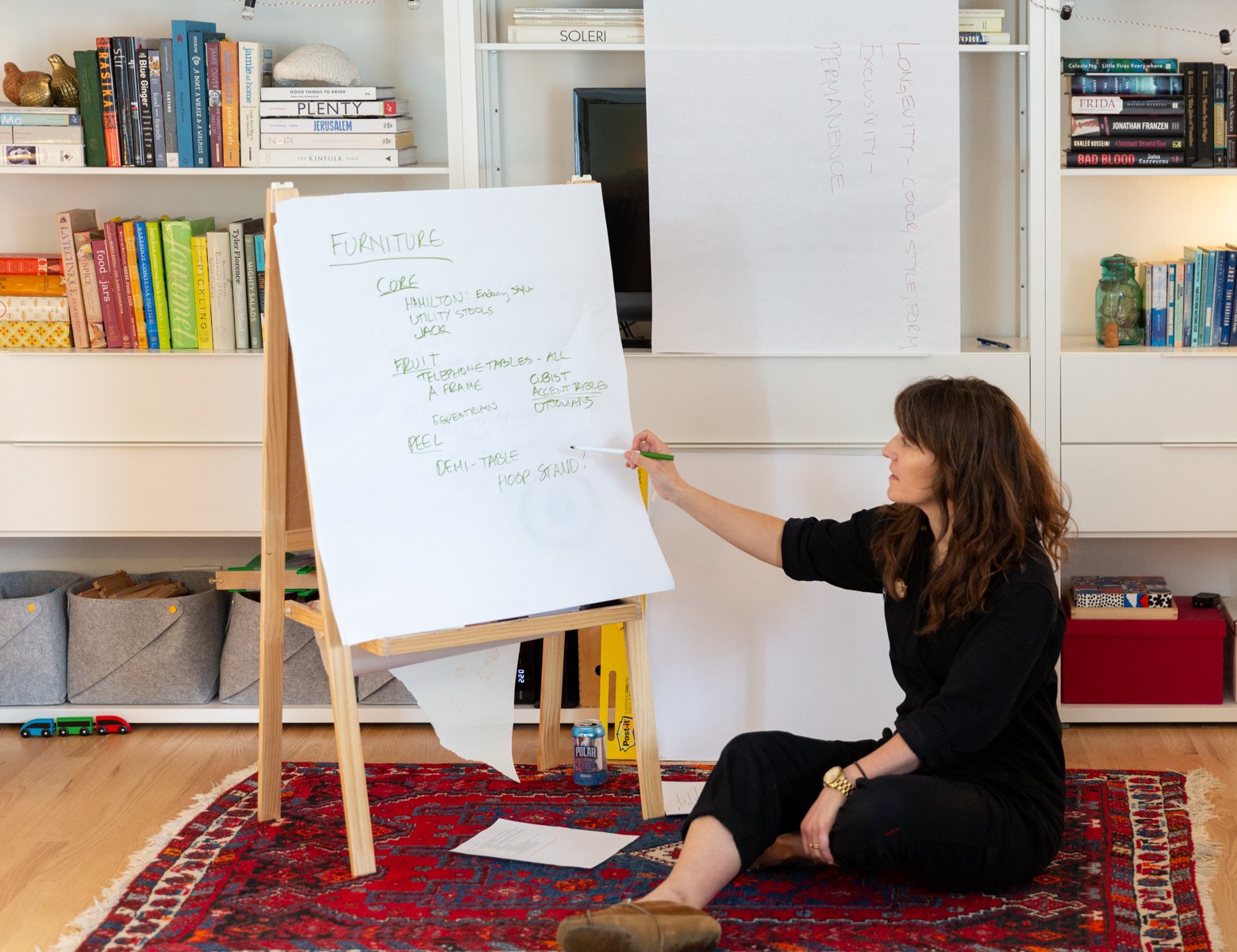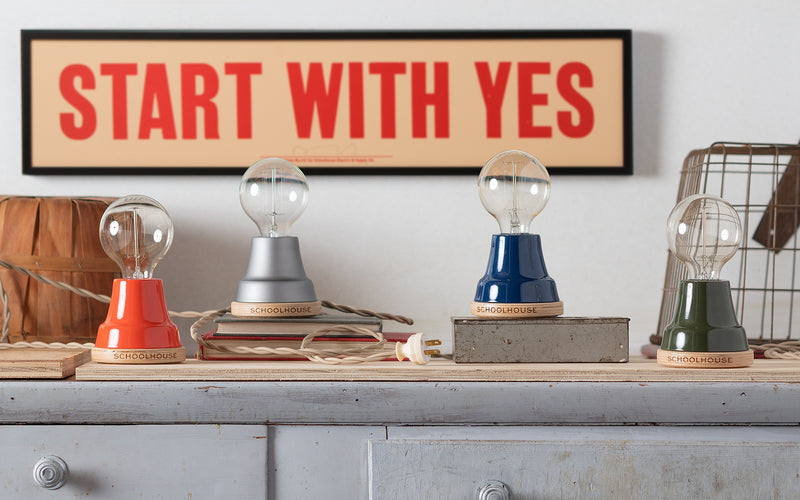Inside Schoolhouse: Product Development Offsite


Earlier this year, our product design team got together at the home of Manager of Product Katie Elliott to start the process of planning our 2020 product collections. For the product designers here at Schoolhouse, creating a modern heirloom is about more than just playing with wood, brass, fabric, and steel in the hopes of making something pretty. They must consider the needs of our customers, our product design values, and the product lines that have come in the past before they ever put pen to paper sketching a new design. Today, we take a peek inside the meeting in order to share a glimpse of what this complex process entails.
After dining on a quick breakfast of croissants, fruit, and coffee, the team gathered to view a presentation of research on Schoolhouse customers. Understanding the customer is a crucial component of the product development process because when you understand a customer, you can see what they need, and when you see what they need, you can design products that solve their problems. Of course, there isn’t just one type of person who shops at Schoolhouse, and a young couple buying a sconce for their rented home will be looking for different things than an international hotelier looking to outfit their newest resort with furniture. But that is why it’s important to spend as much time thinking about each of our different customers as possible.

Next, the team took some time to refresh themselves on the company’s design values, both evergreen and seasonal, starting with a presentation of the 2020 mood board. Each season, Creative Manager Jorie Garcia conceptualizes and curates a new mood board to share with the team. Throughout the year, employees from all throughout the company submit ideas and images to Jorie, who also spends a significant amount of time collecting ideas and images of her own. She then carefully combs through her notes and the suggestions she received to come up with the themes and motifs that will inform the coming season’s products.
There are also more general design guidelines to consider that rarely, if ever, change. These guidelines are presented in the form of questions which the designers must answer.
1. Does the product have a good story to tell?
2. Can it be ethically sourced?
3. Does it solve a problem for our customers?
If the designers can’t satisfactorily answer these questions with a new product design, the product doesn’t make it to the customer. The final consideration to make before product brainstorming can begin is the consideration of product collections from years past. Careful documentation and examination of past products’ successes and failures allows designers to hone the team’s mission to the finest edge possible.


At this point, Katie and Creative Services Manager Jenny Trygg introduced to the team a new lens for viewing our products: the concept of core, fruit and peel. The basic idea here is that the entirety of our products can be viewed as a piece of fruit. The most essential products to our identity as a company are the core products. Products that represent a good example of our style and ethos but that haven’t reached that truly iconic status, are the fruit. It’s in this category that most of our products fall.

Products that are more experimental or seasonal in nature are the peel—these products might include a printed bedding line or a playful colorway on a classic product. These products are aesthetically or conceptually on the edge of our product collections, but they also add freshness and vitality to the whole. By understanding the ratio of products in each category, the design team can consider whether it’s necessary to focus more on developing something more basic and conservative, or something more unusual and trend-bucking. Each collection contains new additions to each category.
With the customers’ needs, the company’s values, and the history of past product lines fresh in their minds, the team then began the brainstorming process. Gathered around a paper easel, the whole team put the weight of their creativity, design knowledge, and skill into the task of creating new products. Unfortunately, that’s all we can share at this point. (Some secrets, after all, are worth keeping.) So if you want to see some of the ideas they came up with, you’ll have to wait for the 2020 product collections to launch.

